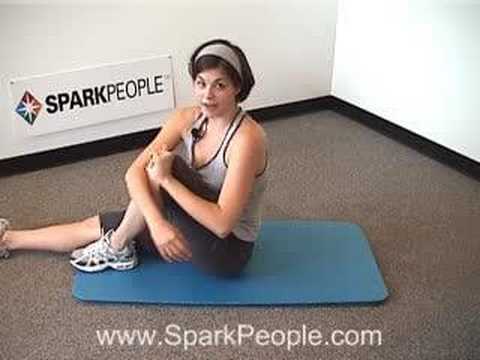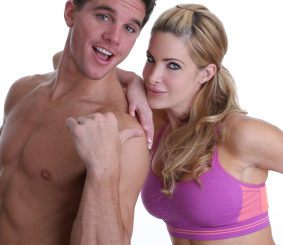
If you’re interested in using Pilates as a part of your exercise routine, you’re not alone. Some estimates state that there are over 10 million people in the United States alone who are practicing Pilates on a daily basis.
What is Pilates?
Whenever you’re looking for a new way to get into shape, you might look for the latest classes and videos available. And while fads come and go, one exercise regimen seems to be popular year after year – Pilates.
This fairly old exercise regimen can help you get into the best shape of your life, using methods employed by dancers and other athletes to help redefine your muscles, reestablish your balance, and rebuild your stamina. Men and women can both benefit from the practice of Pilates, so this is an exercise structure for anyone to try.
The History of Pilates
Pilates began as ‘contrology’ or the idea that our brain actually controls the muscles. Joseph Pilates first created this exercise system in that early 20th century as a way to help rehabilitate soldiers who were coming back from the war.
Pilates realized that physical health and mental health needed to be worked on concurrently in order to help soldiers get back to normal again. By using small movements and stretching from yoga postures as well as breath control, Pilates saw vast improvements in the soldiers as well as in his own personal health.
The Principles of Pilates
There are several principles in Pilates which constitute the practice. First of all, the breathing that is done along with the exercises is designed to help deepen the stretches and the muscle work, while also helping the body to relax into its natural position.
Too many people have troubles with the alignment in their bodies, but Pilates seeks to rebalance this. By breathing, oxygen can also be delivered more effectively to other parts of the body, helping the healing process that takes place in the bloodstream.
The idea of the core is something that began as a part of Pilates as well. By taking the time to focus on one’s center and one’s core, a person can create their own balance and their own posture alignment.
The center of the body is located within the abdomen, a place where the body is held upright and from where it performs the most activities. When this portion of the body is strong and flexible, you will be able to carry yourself well, while also being able to avoid many injuries.
Pilates is also based on the idea of using controlled and precise movements in each repetition. By doing an exercise correctly, one can receive the most benefits than by doing numerous repetitions incorrectly. As a result, many people do not have to do man repetitions in order to see results.
The Health Benefits You Can Enjoy
One of the main benefits of using Pilates as an exercise routine is the lack of injuries. Since you are exercising and strengthening your core, you are automatically supporting your body and helping it stay in a proper alignment. When this happens, you will also be supporting your back, which reduces the number of injuries you might see.
The precise movements also help to prevent injury by pushing the muscle only so far and for only so long. Over time, the overall balance you will gain will also help to prevent falls and other accidents.
People who use Pilates also report they are more flexible, which also helps to increase their injury resistance. This can also help those in other sports who need to stay limber as they move – for example, those who run find that Pilates is an excellent companion to keep their joints from locking.
The calm nature of Pilates has also been linked to helping people reduce their blood pressure as well as their anxiety levels. In having to focus on the exercises, you can block out the worries of your day, helping to create a time for relaxation that can carry over long after the workout is done.
Even women who are pregnant can benefit from using Pilates as a part of their exercise routine, helping to strengthen their bodies for the birthing process. Of course, pregnant women should only exercise under the guidance of a trained Pilates instructor.
Common Pilates Exercises
In order to use Pilates on a daily basis, you will want to make sure you understand the basic exercises that beginners are taught to do. These will help you improve your strength, while also helping you to understand just how effective these common Pilates exercises can be.
Stop – On Your Own or With a Trainer?
Before you continue on to the common Pilates exercises, you need to keep in mind that beginners are subject to more injuries because of not completing the exercises correctly. In order to make sure you are completing the exercises accurately, it might be best to schedule a session with a certified Pilates instructor.
They can physically move your body into the correct positions, helping you to better understand how certain movements should feel and when you should breathe during these movements.
On the other hand, you can also learn the basics of Pilates from many exercise videos. Just make sure to use the beginner’s level DVDs first and to stop any movement that hurts or is uncomfortable to you.
The Hundred
One of the most common Pilates exercises is the hundred. This exercise does not require any equipment, but it does require focus on your breathing and on your form. Start off lying on your back and then bring your knees up so that the bottoms of your feet are resting on the floor. Put your arms out to the side, with your palms facing downward.
Slowly lift your upper body up, pushing your arms out by the sides of your legs. Holding this position, move your arms up and down in small movements while breathing out and in for 100 repetitions. Note that if you life your upper body up higher, this will be more challenging, so you might want to start at a lower position until you gain strength.
As you progress in your common Pilates exercises, you will want to lift your legs up at the same time as you are doing the arm movements. Your legs should be together and out from your body in front of you, lifted up only slightly to keep your balance. From that position, you would do the 100 repetitions.
The Roll Up
Another of the most common Pilates exercises is the roll up. This exercise targets your core once more and it helps to improve the balance of your entire body. You will start by lying on your back and then slowly pull yourself up to a sitting position, keeping your legs on the ground.
Since this will be very difficult for beginners to try, you might want to start in the sitting position first and then slowly roll your body down to the ground before rolling back up. The key with this exercise is that you want to perform it slowly so as not to rely on the momentum of your body to lift you up and down. You can also not roll your body all the way down to the floor, and then slowly lift back up to get the same sort of abdominal resistance.
Balancing On Your Bottom
Common Pilates exercises can seem tricky at first, but as your strength increases, you will be able to do more than you ever thought you could. In the ‘Balancing on Your Bottom’ exercise, you will want to sit on the floor, slowly extended your legs out in front of you, grasping your ankles with your hands.
The final position is to create a ‘V’ shape with your body, lifting your legs up and in front of you as you keep your arms straight out from your chest as you continue to hold on. The key is to find a place to balance on your bottom without using your arms to balance yourself. You can try holding in your stomach to get the exercise to work for you.
No matter what common Pilates exercises you attempt, you will certainly feel the immediate results of your movements. And with practice, they will not only get easier, but also more effective.



Be the first to comment